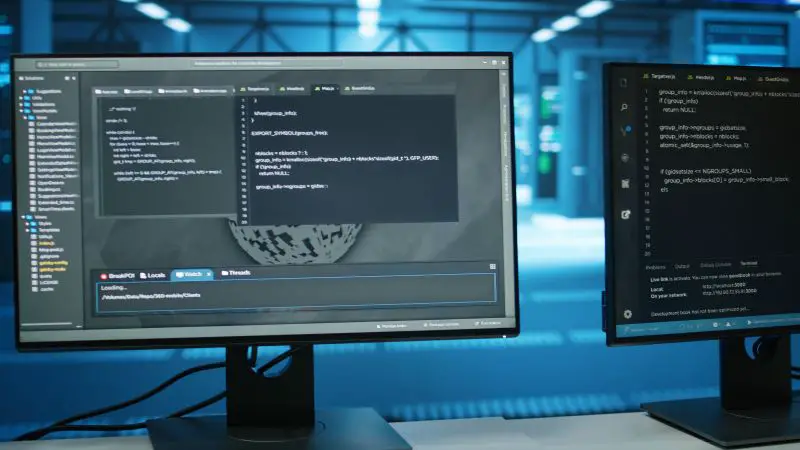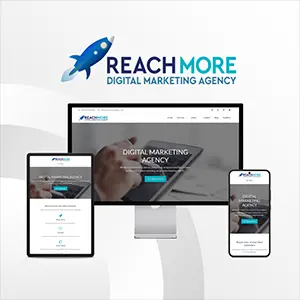Click here to get this post in PDF

Government sectors are changing fast. Just like private businesses, the need for scalable infrastructure and operational improvements is only continuing to increase for government organizations each year.
SaaS solutions are the perfect solution for adding more flexibility and cost-efficiency in both private and public sectors. However, as a SaaS provider, many unique challenges can come up when engaging with government procurement teams that aren’t as typical when marketing B2B or B2C products.
In order to be successful in B2G markets, it’s important to understand how they’re different from other markets and put together specific strategies to help keep your sales pitches more effective.
The Unique Landscape of B2G SaaS
Before you start driving a new B2G sales campaign, it’s important to understand the different nuances that selling to government agencies introduces. Some of these include:
- Complex Procurement Processes – Government buyers have much more strict purchasing requirements than private businesses. This includes having a more lengthy buying process, which can involve multiple approval layers and strict guidelines that vendors need to follow.
- Stronger Focus on Security – Because of the sensitive nature of the data most government entities collect and store, there is a much more rigid set of requirements that products need to meet before they’re seriously considered. In many cases, vendors will need to research and meet the requirements outlined in regulations like FedRAMP and HIPAA.
- Strict Budget Constraints – Since government agencies are held accountable for where and how they spend their funds, they typically have very controlled and sometimes limited budgets. Because of this, vendors need to make sure they’re able to clearly outline the long-term tangible value behind certain products and services.
Key Strategies for Pitching SaaS to Government Agencies
When looking for more government sales opportunities, there are a number of strategies you can follow to make your pitches more successful.
Understand the Agency’s Mission and Needs
Before you get started, the first thing you need to do is do adequate research. Even before you submit your first bid proposal, make sure to understand exactly what type of needs an agency has and why they’re reaching out for new products and services.
Consider their strategic objectives. Do they need a more accessible public safety solution, or are they looking to change their current systems to something more cost-effective? Once you know their primary goals, you can effectively address them.
Taking the time to truly understand your audience helps you build a more compelling pitch and shows them that you’re invested in helping them find the “right” solution.
Navigate the Procurement Process
If you’ve never pitched to government agencies before, you’ll quickly find that the procurement process looks considerably different. Unlike private companies that typically have only one or two key decision-makers depending on the product category, government agencies often have teams of individuals in charge of making final decisions.
Another primary differentiator is how government organizations source new products and services. Almost all government agencies will use Requests for Proposals (RFPs) or Requests for Quotes (RFQs). These formal proposal documents allow you to provide bids on various government contracts that open up throughout the year. However, these bid proposals will also be open to many other vendors as well, making it a bit more difficult to close.
Prioritize Security and Compliance
Government agencies house a lot of sensitive information related to their citizens. Because of this, they are very weary of adopting new technologies without thoroughly vetting their security integrity.
It’s important to ensure that your SaaS solutions meet the latest security standards that will vary depending on the industry you represent. For example, computer-aided dispatch solutions are generally regulated by security frameworks such as FedRAMP, HIPPA, or NIST. You’ll want to make sure you thoroughly research any requirements stipulated by agencies in their RFPs before submitting a proposal.
Taking the time to ensure your solutions address any relevant data privacy concerns is a great way to help differentiate your products from the competition. It will go a long way in adding more credibility to your brand and help move you through the next stages of the procurement process.
Build New Relationships
Like with all successful sales initiatives, relationship building is an important part of the procurement process. There are a number of ways you can network and establish new relationships with government agencies. Attending trade shows and industry events is a great place to start.
While government organizations have a very open and ethical process for sourcing their products and services, building new connections with procurement specialists or various officials will help to keep you informed about new potential contract needs on the horizon. You may also be able to open up the doors for preemptive discussions that can help you get a better understanding of the key features or benefits they’re looking for, as well as applicable timelines.
Focus on Value and ROI
Private companies have much more flexibility when deciding how to allocate their funds. They can also use their discretion when evaluating what’s the most important features to them or how they quantify real value.
Government agencies are quite different in this regard. For starters, public-facing organizations need to answer for every dollar they spend. This means that the solutions your sources need to provide tangible value and providing them with a positive ROI.
To make it easier for governments to understand this value, be sure to highlight how the cost-effective elements of your product or service. This includes demonstrating how it can help lower infrastructure maintenance needs or provide other longer-term benefits.
Prepare for Full Transparency
Because of how important it is for governments to justify their purchasing decisions, it’s important to be as transparent as possible as a vendor. This means you’ll likely be asked a number of questions about how your business operates as well as the design of yoru products. Often this will include giving a detailed breakdown of key functionalities, security features, pricing, and even business sustainability initiatives.
Governments need the assurance that they’re working with a credible vendor they can trust. This is especially the case since many government contracts can last for several years. By being as open and honest as possible during the review process, you’ll set a good foundation for building a long-term relationship.
Offer Pilot Programs or Demonstrations
Pilot programs and free product demonstrations can also be incredibly valuable when navigating government sales cycles. Offering a trial run of your SaaS solution allows government agencies to experience its benefits firsthand without making a full commitment.
Demonstrations allow you to showcase your solution’s functionality in a real-world setting and address any specific concerns the agency may have. A successful pilot program can significantly strengthen your position and pave the way for closing more government contracts.
Start Closing More Government Contracts
Closing more government contracts when marketing SaaS products requires a more tactical approach. By understanding the nuances of the B2G sector, prioritizing security and compliance initiatives, building strong relationships, and focusing on value and ROI, you’ll be able to significantly increase your chances of success.
About the Author
Kevin Ruef co-founded 10-8 Systems after exceeding multiple companies’ sales records (both domestically and internationally). With more than a decade in sales, his experience ranges from B2B, B2G, and B2C. Since the company’s start in 2019, Kevin has been responsible for business development, strategic partnerships, and business operations.
Also read:
The Rise of SaaS with AI: Ahmed Abdullah’s Contribution to Operational Efficiency
Kaizen raises $21 million to re-build government’s digital front door

